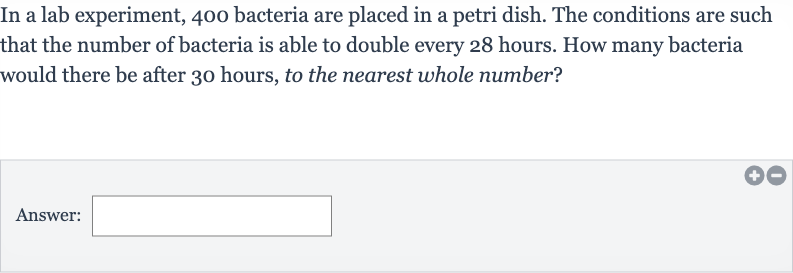AI tutor
Welcome to Bytelearn!
Let’s check out your problem:

In a lab experiment, bacteria are placed in a petri dish. The conditions are such that the number of bacteria is able to double every hours. How many bacteria would there be after hours, to the nearest whole number?Answer:
Full solution
Q. In a lab experiment, bacteria are placed in a petri dish. The conditions are such that the number of bacteria is able to double every hours. How many bacteria would there be after hours, to the nearest whole number?Answer:
- Identify initial number: Identify the initial number of bacteria and the rate at which they double.Initial number of bacteria: Doubling time: hoursWe need to calculate the number of times the bacteria will double in hours.
- Calculate doubling periods: Calculate the number of doubling periods in hours.Since the bacteria double every hours, we divide the total time by the doubling time to find the number of doubling periods.Number of doubling periods Number of doubling periods Number of doubling periods This is not a whole number because the bacteria do not have enough time to double twice.
- Calculate number after hours: Calculate the number of bacteria after hours.Since the bacteria double times, we need to multiply the initial number of bacteria by raised to the power of the number of doubling periods.Number of bacteria after hours = Initial number of bacteria Number of bacteria after hours = Number of bacteria after hours Number of bacteria after hours
More problems from Convert between customary and metric systems
QuestionGet tutor help
QuestionGet tutor help
QuestionGet tutor help
QuestionGet tutor help
QuestionGet tutor help
QuestionGet tutor help
